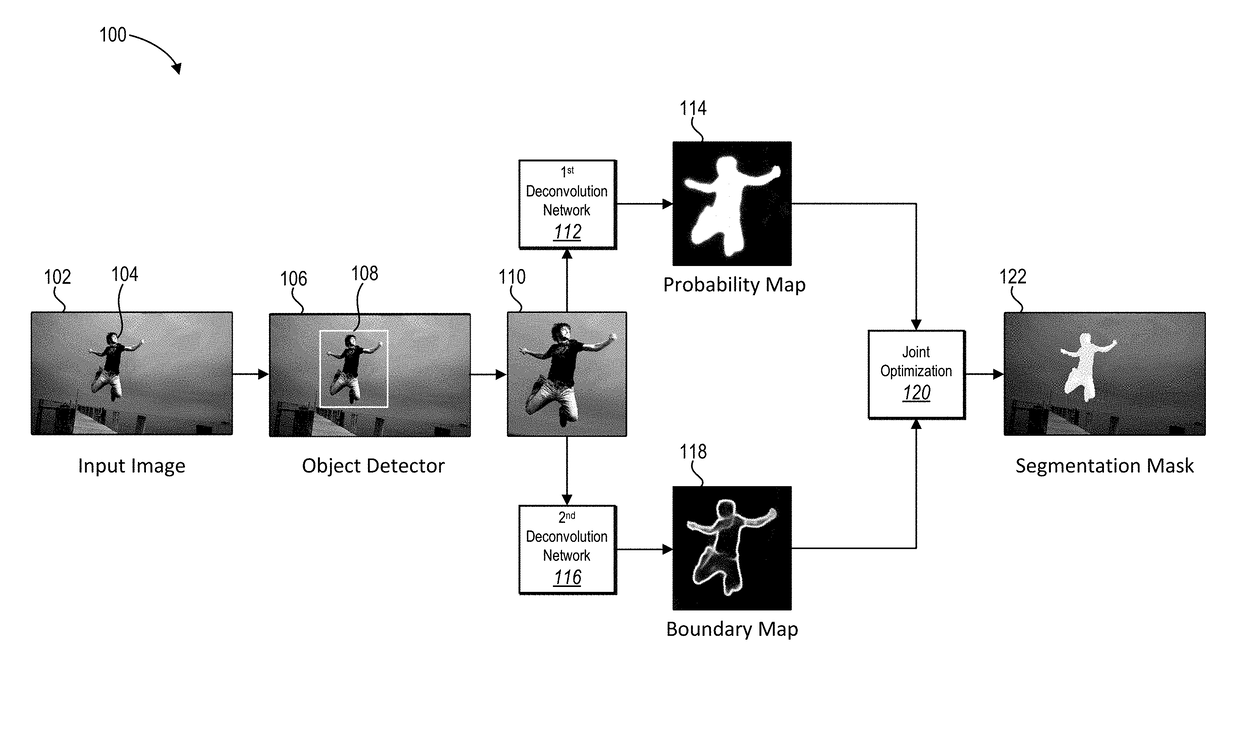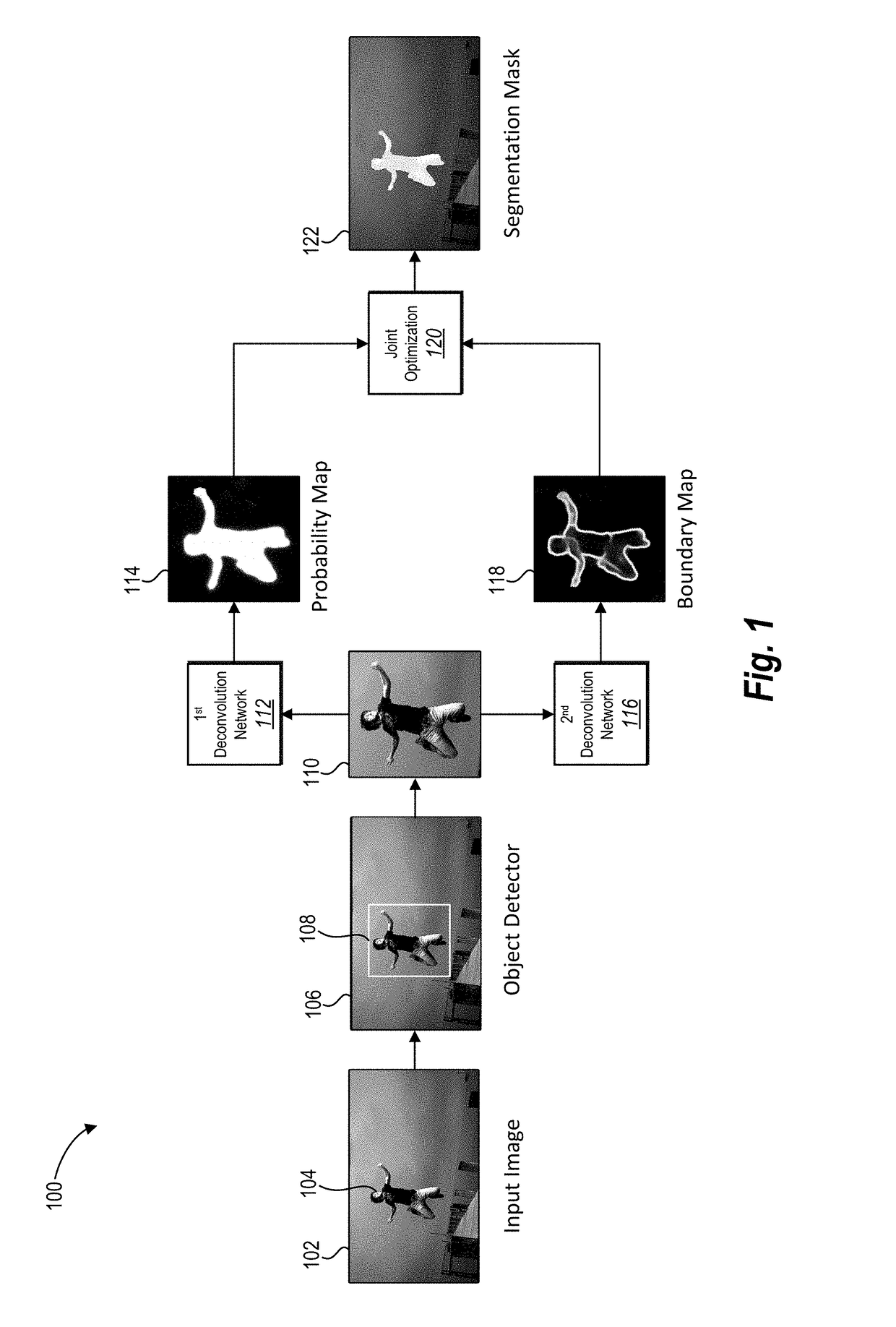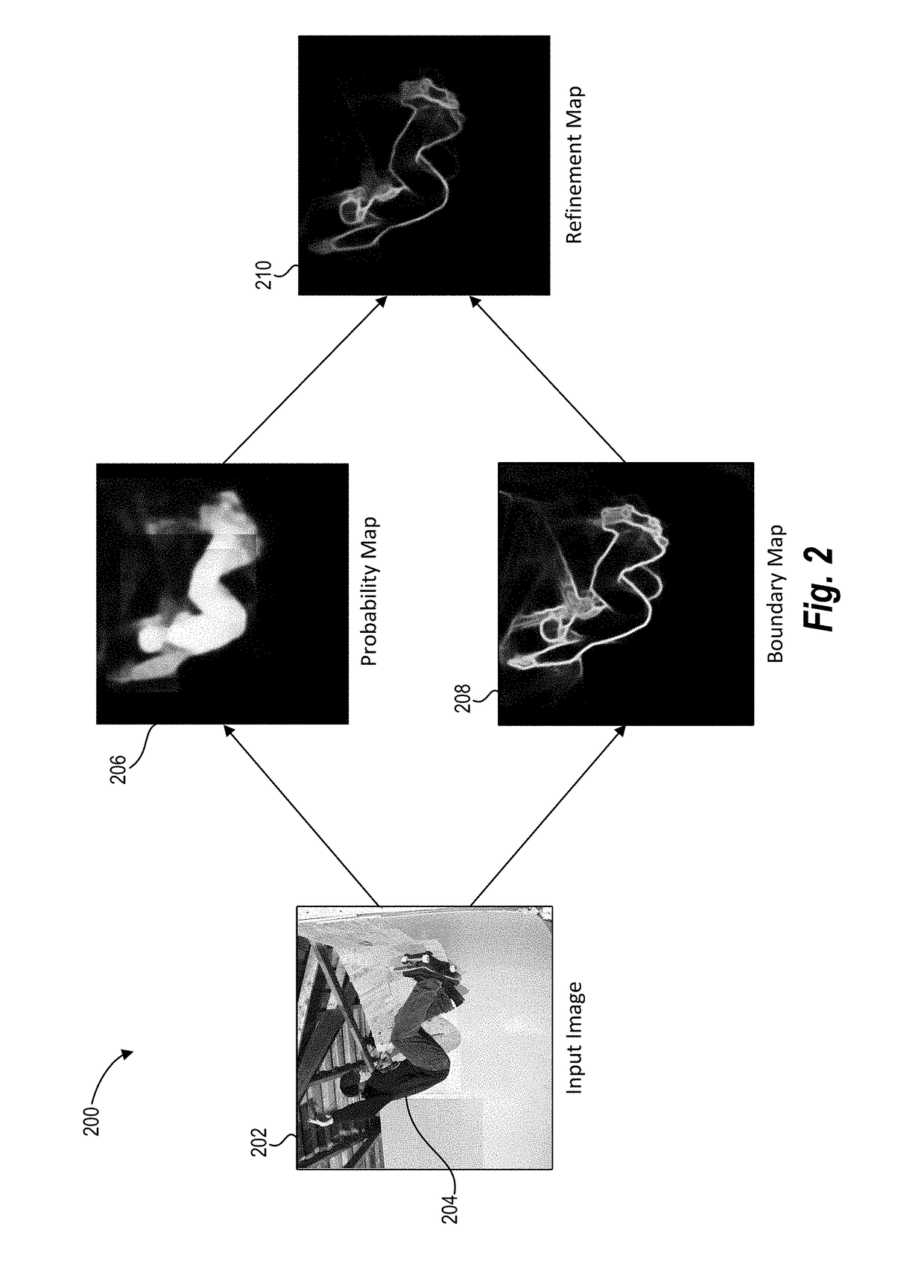Utilizing deep learning for boundary-aware image segmentation
a deep learning and image segmentation technology, applied in image enhancement, instruments, biological models, etc., can solve the problems of inaccurate segmentation of edges, inability to calculate or generate a cohesive boundary between pixels that correspond, and large manual labor, etc., to achieve accurate fitting of segmentation masks to edges.
- Summary
- Abstract
- Description
- Claims
- Application Information
AI Technical Summary
Benefits of technology
Problems solved by technology
Method used
Image
Examples
Embodiment Construction
[0032]One or more embodiments of the present disclosure include a digital segmentation system that identifies and selects pixels corresponding to an object (e.g., a person) portrayed in digital visual media. For instance, the digital segmentation system identifies an object portrayed in a digital image utilizing deep learning techniques in combination with an optimization process to generate a segmentation mask that accurately identifies pixels corresponding to the object. In particular, the digital segmentation system uses deep learning techniques in combination with an optimization process to accurately match a segmentation mask to the edges an object portrayed in a digital image. The accuracy of the resulting segmentation mask provides image segmentation results that are significantly more accurate than conventional systems. As such, the digital segmentation system disclosed herein allows a user to quickly and easily segment a digital image to identify an object portrayed in the ...
PUM
 Login to View More
Login to View More Abstract
Description
Claims
Application Information
 Login to View More
Login to View More - R&D
- Intellectual Property
- Life Sciences
- Materials
- Tech Scout
- Unparalleled Data Quality
- Higher Quality Content
- 60% Fewer Hallucinations
Browse by: Latest US Patents, China's latest patents, Technical Efficacy Thesaurus, Application Domain, Technology Topic, Popular Technical Reports.
© 2025 PatSnap. All rights reserved.Legal|Privacy policy|Modern Slavery Act Transparency Statement|Sitemap|About US| Contact US: help@patsnap.com



